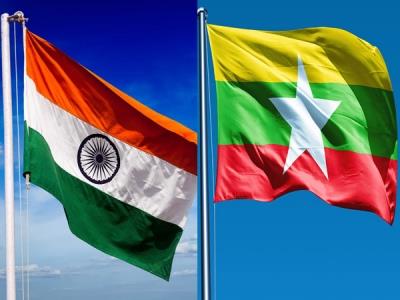(MENAFN- IANS)

New Delhi, May 18 (IANS) The Indian state of Mizoram has been providing shelter and refuge to over 29,000 people from the bordering nation of Myanmar since the middle of last year. While 15,000 people from Chin state crossed into Mizoram last July-August, a fresh spurt of violence in Myanmar led to another exodus in January-February 2022.
India is thus witness, once again, to refugees fleeing from Myanmar, a nation that has gone back to military rule since February 2021 and has a record nine million Internally Displaced Persons. It is in this context that the present analysis looks at the scope for bilateral cooperation between India and Myanmar on a range of issues, including the provision of humanitarian aid. This is relevant because India has adopted a very clear people oriented position on Myanmar.
India has taken a cautious stand on the developments in Myanmar since early 2021, given its strategic investments in that country. A host of projects ranging from infrastructure, housing and training are underway in Myanmar and therefore it makes sense for India to attempt continuity rather than re-visit ties completely.
The way forward is for informal engagement focused on assisting the people of Myanmar. Notably, in the Indian government's Budget for 2022, India allocated Rs 600 crore in the form of aid, Lines of Credit and other forms of assistance. In recent years, India has assisted Myanmar through capacity-building programmes for strengthening the transition to democracy.
It is worth recalling that in 2017, India signed an MoU for the Rakhine State Development Programme and India built 250 prefabricated housing for rehabilitation of displaced persons in Rakhine state. This was for the first year. Subsequent projects are well underway.
A year later, the 2018 Bilateral Land Border Crossing Agreement was signed, which allows for free movement of the local people within 16 kilometres of the respective border with a border pass. This is a key measure towards providing Burmese citizens access to India's healthcare infrastructure close to border areas.
One of the biggest drivers to facilitate closer economic relations is to provide greater connectivity. The availability of functional riverine and railway routes in addition to land routes should be leveraged. These linkages can help drive more trade and people to people contact.
More recently, India generously supplied Covid-19 medical equipment and vaccines to Myanmar. The first lot was sent in May 2020, a second tranche was sent in October and in early 2021, 17 lakh vaccine doses were gifted under grant assistance. The Kaladan Multi-modal Transit Transport Project is perhaps the most important infrastructure initiative undertaken by India in Myanmar. Notably, work on the road component of the project from Palewa to Zorinpui is now under progress. Once complete, it would give a sense of finality to India's efforts in this project. There are a host of other such initiatives reflecting India's development assistance to Myanmar goes beyond governments and is focused on the people.
India's position on Myanmar was very clearly articulated by the spokesperson for the Indian Ministry of External Affairs (MEA) in February 2021, soon after the military coup. He noted that while India was monitoring the situation closely, it won't hold back on aid. 'We remain committed to continuing our humanitarian support for the people in Myanmar in mitigating the health and economic impact of the pandemic,' he said.
In January 2022, India's Foreign Secretary visited Myanmar to discuss security along the India-Myanmar border. During the visit, Foreign Secretary also handed over 10 lakh Covid vaccine doses to the Myanmar Red Cross Society, a portion of which will be provided to communities living along the border with India.
Given this background of cooperation, it is necessary to look at opportunities for greater cooperation and provision of humanitarian aid to Myanmar. This, of course, can occur only bilaterally and with the concurrence of local authorities in Myanmar.
Pertinently, China is providing vaccines to both the military government and the rebels. Therefore, India should positively respond to any calls for Covid-19 emergency medical assistance to the people of Myanmar.
The current humanitarian crisis in Myanmar and flow of refugees into India provides a chance for the Indian government to reassess how to continue with its current policy, while enhancing humanitarian aid to Myanmar. While existing cooperative endeavours continue, the need to explore potential coordination opportunities in the future must be undertaken. This will require renewed discussions between military authorities in both the countries.
India could consider inviting Myanmar's Foreign Minister at an appropriate time and place to India for deliberations with their counterparts here. This will help initiate a process of discussion which can be sustained over a period of time. Remember that Myanmar is the lynchpin of India's Act East policy, particularly in regard to trade. This is by virtue of Myanmar being India's gateway to Southeast Asia. Myanmar provides India with increased connectivity to its Northeastern states, providing a faster route of transit as compared to going through Bangladesh. In the long run, therefore it makes sense for both India and Myanmar to cooperate for mutual benefit.
--IANS
dpb/
MENAFN18052022000231011071ID1104234984
Legal Disclaimer:
MENAFN provides the information “as is” without warranty of any kind. We do not accept any responsibility or liability for the accuracy, content, images, videos, licenses, completeness, legality, or reliability of the information contained in this article. If you have any complaints or copyright issues related to this article, kindly contact the provider above.